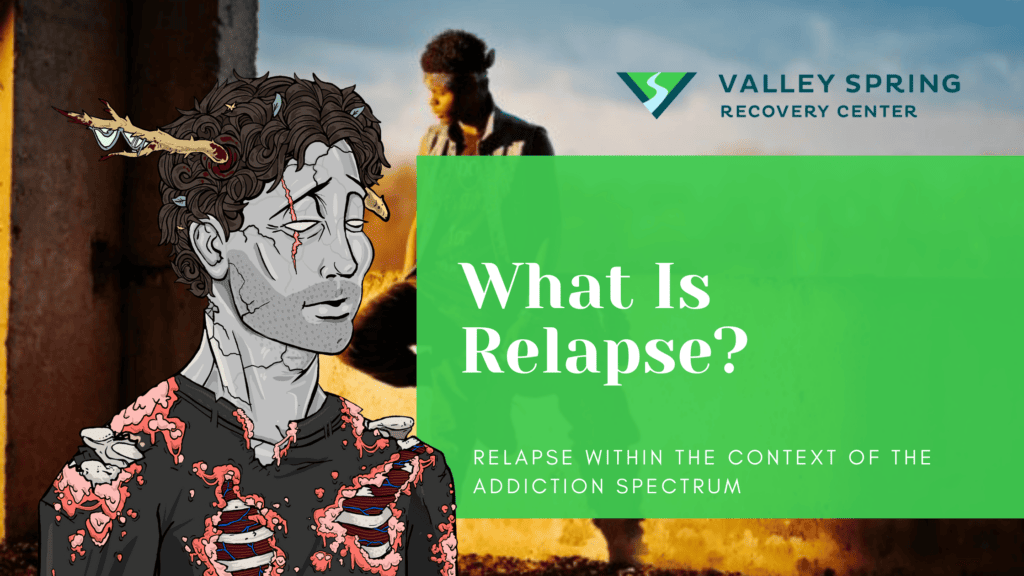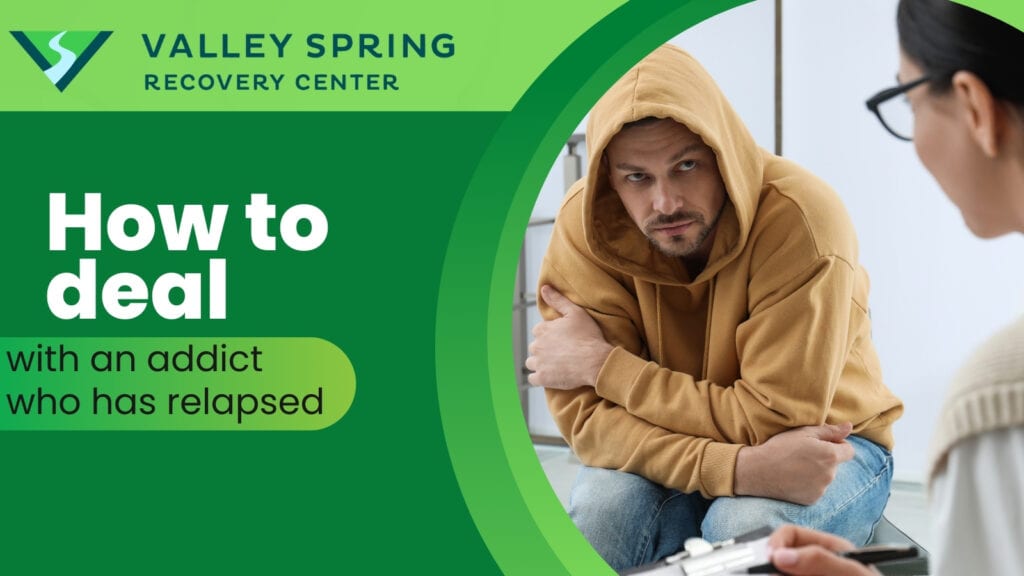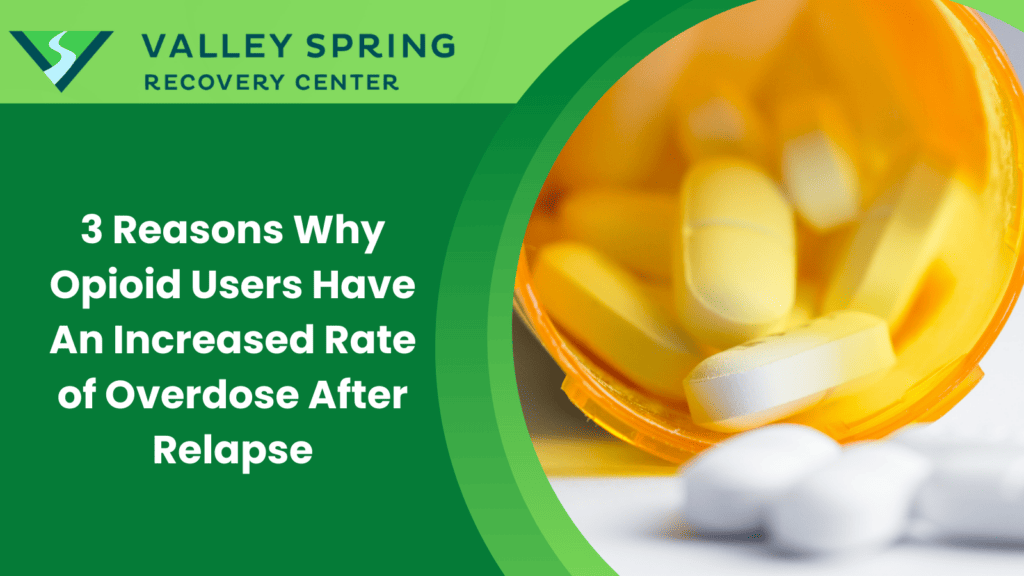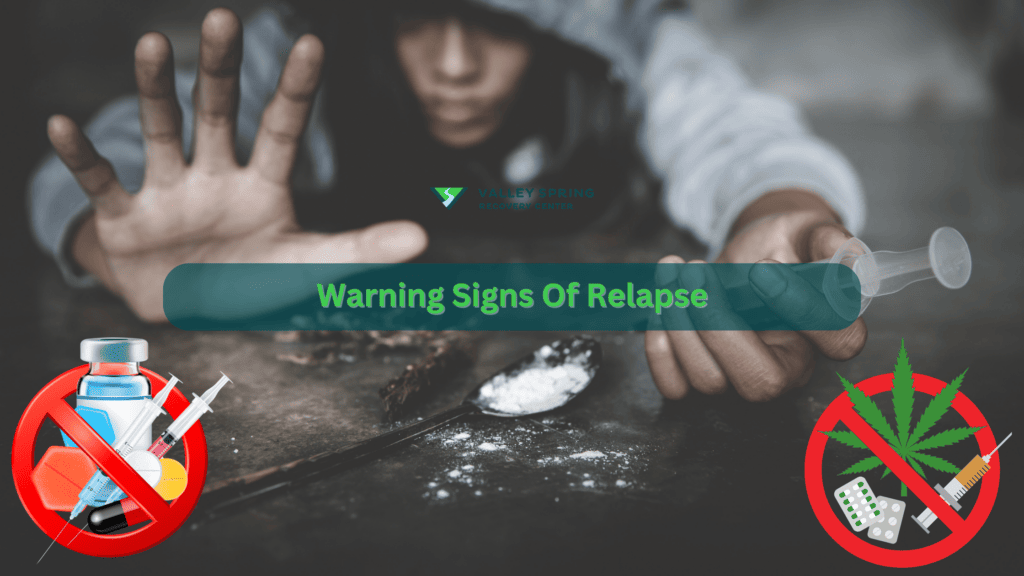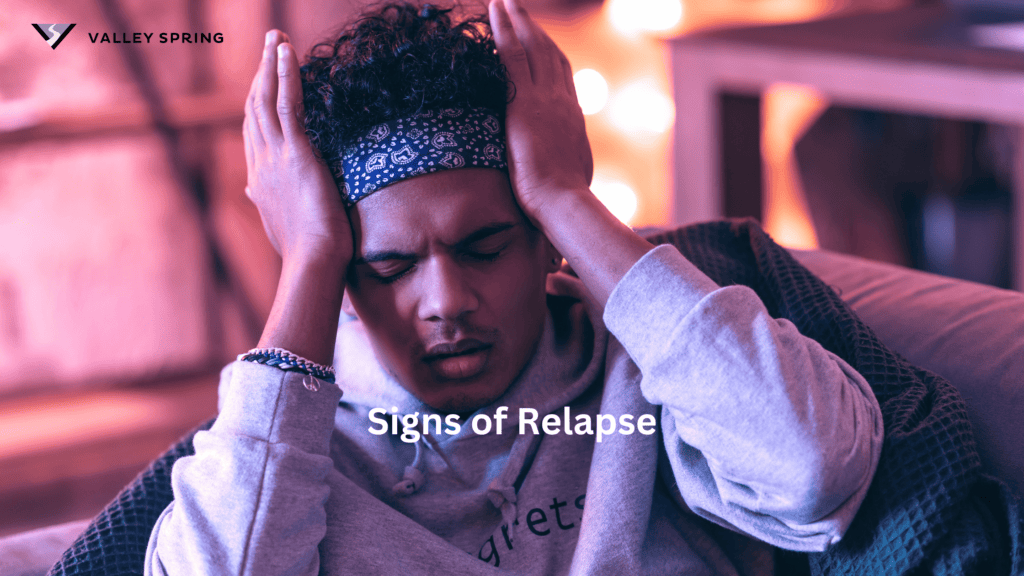Understanding addiction relapse is important because it happens frequently and is also avoidable. Read on to learn everything you need to know about relapse signs, causes, effects and how to prevent it.
Dr Michael Olla
Navigating the road to sobriety is filled with hurdles, and one of the most significant challenges is avoiding relapse. However, understanding its frequency, triggers, and underlying mechanisms can empower you to manage it more effectively. Addiction is a persistent condition marked by an uncontrolled urge to use substances, even when they bring about negative outcomes. Experiencing a lapse or relapse isn’t a mark of weakness or failure; rather, it signals a need for new coping strategies. With the right support network, a fulfilling life post-addiction is entirely achievable. Staying engaged and employing robust relapse prevention methods can significantly enhance your life quality and pave the way for sustained sobriety.
Signs of relapse often manifest in behavioral, emotional, or physical ways. Behaviorally, individuals might start avoiding therapy sessions or support groups, reconnect with substance-using friends, or become increasingly secretive. Emotionally, there might be a surge in stress, anxiety, or depression, coupled with feelings of hopelessness or negativity toward recovery efforts. Physically, changes might occur in eating or sleeping patterns, personal hygiene may decline, or there could be a resumption of substance use.
Causes of relapse are typically multifaceted, involving stress, environmental cues, and mental health issues. Stress can arise from personal, professional, or social challenges, heightening the risk of relapse. Environmental cues, like being in places associated with past substance use, can trigger cravings. Mental health disorders, if not properly managed, also play a significant role in relapse, with conditions like depression or anxiety contributing significantly.
Effects of relapse extend beyond the individual to their support networks and can result in a return to active addiction. The person experiencing relapse may feel guilt, shame, and a sense of lost progress, potentially worsening the issues that led to substance use initially. Physically, the risk of overdose increases, especially if tolerance to the substance has decreased. For friends and family, the emotional toll can be substantial, often straining relationships. It’s crucial to view relapse not as a failure, but as an opportunity to reassess and reinforce the recovery strategy.
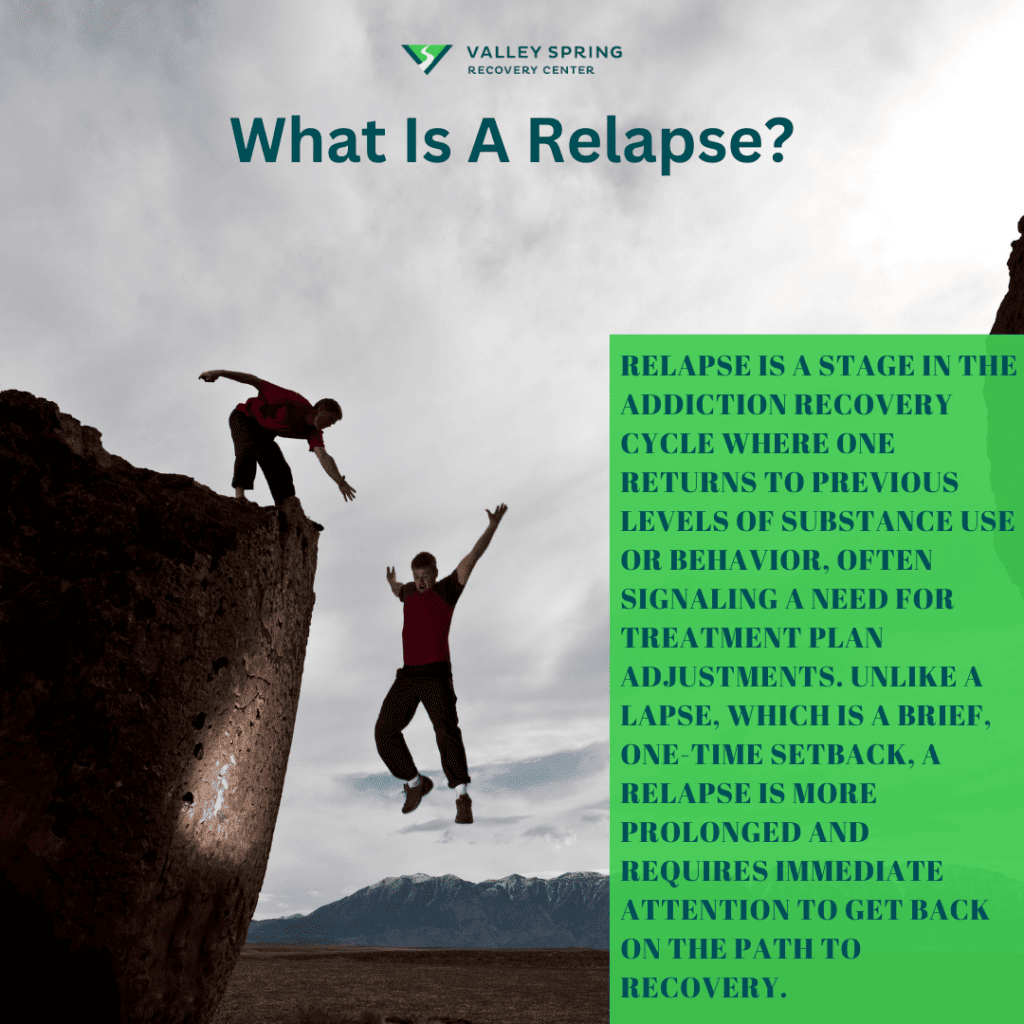
What is Relapse?
Relapse is a stage in the addiction cycle characterized by the resumption of substance use or addictive behavior, after a period of abstinence from addiction. Relapse is a common event, particularly for those new to the recovery journey, and should not be seen as a failure. Instead, it serves as an indicator that the existing treatment plan may require modification. A relapse typically involves a return to previous levels of substance use or behavior, often triggered by stressors, craving without the proper coping mechanisms or emotional events, and signifies difficulties in managing the addiction.
According to a study published by the National Institute on Drug Abuse (NIDA) titled Drugs, Brains, and Behavior: The Science of Addiction Treatment and Recovery, there is a 40%-60% risk of relapsing for people undergoing treatment for substance use. This shows that relapsing is quite common among recovering addicts.
Why Does Relapse Happen?
Drug and alcohol relapse usually occurs when an individual is triggered to revert to old behaviors which can occur as a result of insecure housing, professional or personal setbacks, social pressures, social stigma, pre-existing mental health, emotional issues, or pre-existing physical health issues. Relapse occurs more frequently when an individual becomes complacent in their recovery.
The 6 main reasons that people relapse are listed below.
Emotional Triggers: “Emotions are the gateway to relapse,” (verywell Health). Emotional triggers such as stress, anxiety, or depression can make individuals more susceptible to relapse.
Environmental Factors: Being in an environment that encourages substance use or being around people who use substances can be a significant trigger. “Your environment can either support your recovery or undermine it,” Dr. Michael Olla.
Complacency: After a period of sobriety, some people become complacent, thinking they are “cured.” This mindset can lead to risky behaviors that trigger a relapse. When someone with a substance use disorder stops their treatment routine, relapse becomes more likely.
First, Emotional Triggers: Emotions significantly influence the likelihood of relapse. As Verywell Health articulates, “Emotions are the gateway to relapse.” Feelings such as stress, anxiety, or depression can make individuals more prone to reverting back to substance use.
Second, Environmental Factors: The surroundings and social interactions play a crucial role. Dr. Michael Olla notes, “Your environment can either support your recovery or undermine it.” Being in settings or around people who engage in substance use can trigger a relapse.
Third, Complacency in Recovery: After a period of sobriety, some individuals may develop a false sense of security, thinking they are fully “cured.” This mindset can lead to a relaxation of critical treatment routines, increasing the likelihood of relapse.
Fourth, Unaddressed Mental Health Issues: Co-occurring mental health disorders like anxiety, depression, or PTSD often underlie addiction. If these issues remain unaddressed or are inadequately treated, they can drive a person back to substance use as a coping mechanism.
Fifth, Physical Pain or Discomfort: For some, especially those recovering from opioid addiction, physical pain can be a trigger. Managing pre existing health conditions associated that cause pain without the use of addictive substances is a significant challenge and can lead to relapse if not handled properly.
Finally, Peer Pressure and Social Influence: The influence of friends or social circles that use drugs or alcohol can be a strong factor leading to relapse. The desire to fit in or the fear of rejection can push individuals towards old habits.
It’s important to acknowledge that relapse isn’t a sign of failure but rather an obstacle in the ongoing journey of recovery. Understanding and addressing these triggers are key steps in maintaining sobriety.
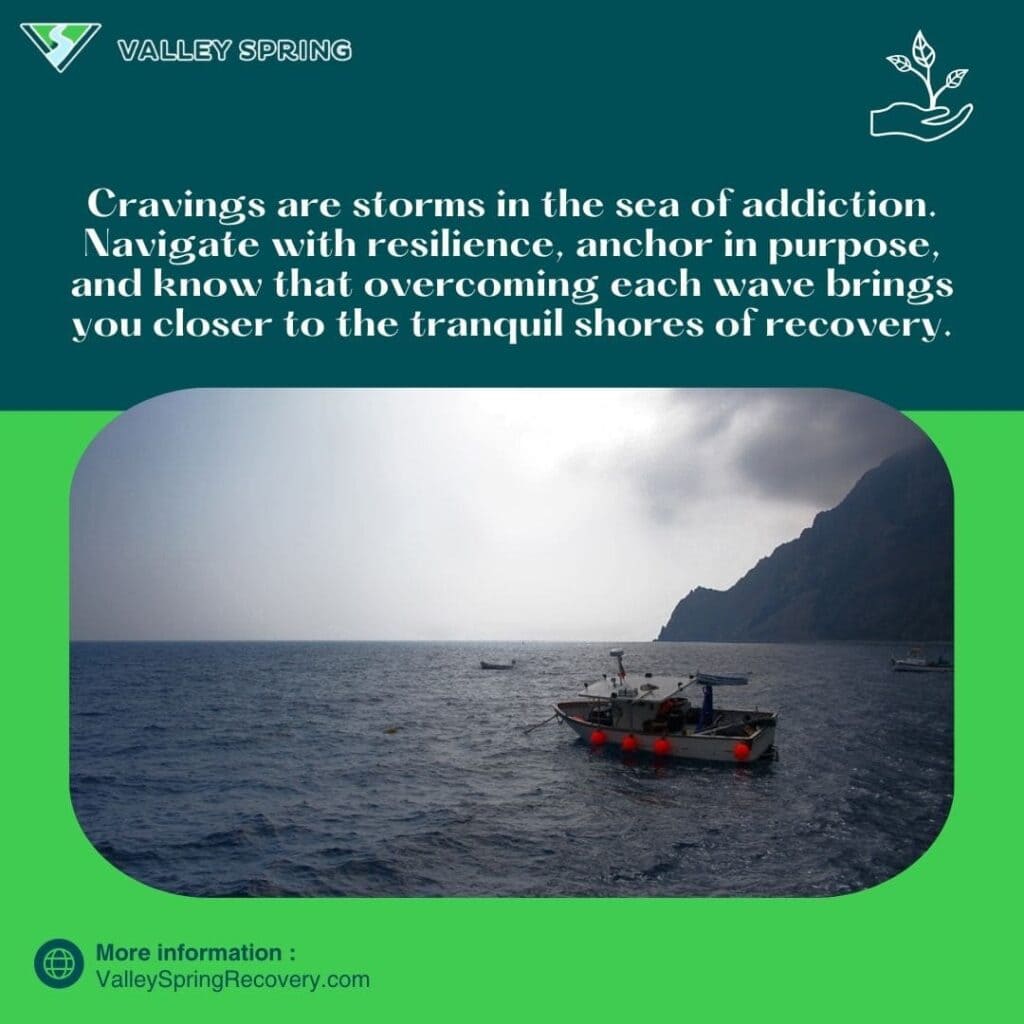
How Often Does Relapse Happen?
The relapse rate for substance use disorders is estimated to be between 40% and 60% according to JAMA. This rate is comparable to relapse rates for other chronic diseases like diabetes and hypertension.
The frequency of relapse can vary widely among individuals, depending on various factors such as the length of sobriety, the presence of a support system, and adherence to a treatment plan.
What Are The Early Warning Signs And Symptoms Of Relapse?
The early warning signs of relapse are listed below:
- Emotional Changes: One of the first signs of a potential relapse is a shift in emotional state. Individuals may experience heightened levels of stress, anxiety, or depression. These emotional changes often serve as triggers, pushing the person closer to using drugs again as a coping mechanism. Emotional instability can manifest in various ways, such as irritability, mood swings, or withdrawal from social activities and loved ones.
- Behavioral Indicators: Behavioral changes are another significant warning sign. These can include neglecting responsibilities, a decline in performance at work or school, and a lack of interest in activities that were once enjoyable. Additionally, changes in sleep patterns, such as insomnia or excessive sleep, can also be indicative of an impending relapse. In some cases, individuals may start to associate with friends or environments where drug use is normalized, further increasing the risk of relapse.
- Isolation: Isolation is a high-risk factor for people recovering from substance abuse. The recovering user will suddenly or gradually stop associating with their support group, cancel therapy appointments, avoid family and friends, and skip important social events.
- Lack of self-care: Self-care is an important aspect of the recovery process and helps in preventing addiction relapse. Self-care includes eating a balanced diet, observing personal hygiene, and exercising regularly. Neglecting self-care is a warning sign that the person is sliding down the path to a relapse.
- Cognitive Signs: Cognitive symptoms often precede a relapse and can be subtle yet dangerous. These include rationalizing or minimizing the consequences of drug use, fantasizing about using drugs again or experiencing cravings. The individual may start to think that they can control their usage this time around, underestimating the power of addiction. This cognitive distortion can quickly lead to a relapse if not addressed promptly.
- Physical Symptoms: Physical signs are usually the last to appear and often indicate that a relapse is imminent. These can include restlessness, changes in appetite, or even physical discomfort like headaches or stomach issues. In extreme cases, individuals may start to exhibit drug-seeking behaviors, such as visiting places where they used to obtain drugs or even attempting to acquire drugs.
- Cravings: Engaging in habit-forming behavior creates a strong association with those habits in the brain’s reward center. Therefore, it is normal for a recovering user to experience cravings when they encounter things, people, places, or events associated with the substance. However, when the person is no longer trying to avoid the triggers that bring on the cravings, that is a sign of relapsing.
How Does Relapse Happen?
Relapse is usually a gradual process that starts with emotional relapse, followed by mental relapse, and finally, physical relapse. Physical relapse is the act of returning to substance use explains psychiatrist and addiction specialist Dr. Michael Olla.
Recovering addicts may rationalize substance use as a one-time event or as a reward for prolonged sobriety. This rationalization is often a slippery slope to full-blown relapse.
Lack of effective coping strategies makes it more likely for individuals in recovery to succumb to cravings and resort to substance use when faced with triggers. Coping mechanisms are the first line of defense against cravings.
What Are The Effects of Addiction Relapse?
Effects of addiction relapse include low self-esteem, legal problems, and strained relationships.
Low self-esteem
An addiction relapse carries the risk of shattering a person’s sense of confidence. The recovering user starts to feel as if they have failed to live up to the ideals they have upheld during their sobriety period. Hopelessness may creep in, making it harder to commit again to the recovery process. In addition, they may feel guilty, and ashamed.
Legal problems
During a relapse, the person may engage in risky behavior such as shoplifting, or burglary to finance their behavior. As a result, they are likely to get into trouble with authorities including arrests, serving jail time, and fines.
Isolation, and strained relationships
Using addictive substances comes with its share of social problems. Since the relapsed user feels embarrassed for failing to keep their word to family, and friends, they are likely to avoid interactions and withdraw from social events. In addition, the person will have difficulty establishing and maintaining meaningful relationships as family, and friends may feel frustrated, and betrayed by the relapse.
Financial problems
Addiction relapse affects a person’s productivity, and their ability to hold down a job, As a result, the person gets fired and loses their income. This makes their situation worse as they are no longer able to pay their bills or take care of themselves or their family.
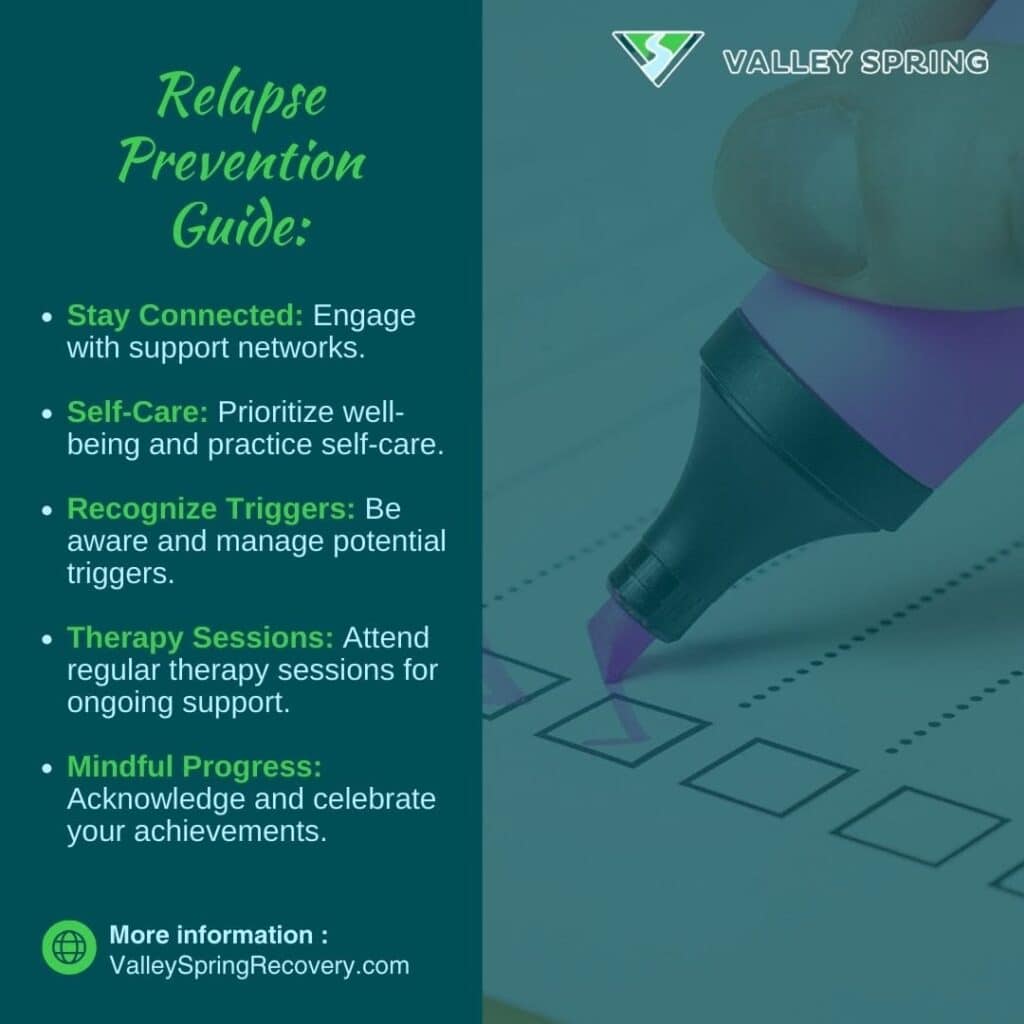
How to Prevent and Avoid Relapse
The 12 ways to prevent relapse are listed below.
- Admission and Acknowledgment: Accepting that there is a problem with substance abuse.
- Seeking Professional Help: Finding a program or professional that suits the individual’s needs.
- Commitment to the Process: Sobriety requires ongoing dedication and effort.
- Building a Support System: Engaging with friends, family, or support groups that understand and aid in the journey.
- Establish a Support Network: Regularly engage with support groups, counselors, or trusted individuals who understand your journey.
- Develop Healthy Habits: Focus on a balanced diet, regular exercise, and sufficient sleep to maintain physical and mental health.
- Identify and Manage Triggers: Recognize situations, emotions, or people that tempt you to use again and develop strategies to cope with them.
- Continuous Learning and Growth: Stay informed about addiction and recovery. Engaging in educational activities can strengthen your resolve.
- Create a Structured Routine: A predictable daily schedule can provide stability and reduce the risk of impulsive decisions.
- Practice Stress-Reduction Techniques: Incorporate mindfulness, meditation, or yoga to manage stress effectively.
- Seek Professional Help When Needed: Don’t hesitate to consult healthcare professionals if you’re struggling with cravings or emotional challenges.
- Celebrate Progress: Acknowledge and rewarding achievements in recovery, no matter how small is important positive reinforcement.
Staying vigilant and committed to these strategies can significantly reduce the risk of relapse, paving the way for a sustained recovery.
What Is The Difference Between a Lapse and a Relapse?
Relapse and lapse in addiction recovery differ mainly in duration and intensity. A relapse is a more extended return to addictive behaviors or substance use at previous levels, often requiring a reassessment of treatment. Conversely, a lapse is a brief, one-time occurrence, serving as a prompt to refocus on recovery without escalating to previous usage levels. For instance, an individual may briefly use a substance once and immediately return to sobriety, indicating a lapse. A relapse, however, involves a return to regular use as before recovery. Both scenarios are common in the recovery journey, and recognizing them as part of the process is essential for effective management and continued treatment progress.
Slip, and lapse refers to the person resuming the habit once or temporarily. During a lapse or slip, the person will engage in the habit, then stop, and seek to go back to sobriety.
Does Relapse Mean Treatment Has Failed?
Relapse is not an indicator of failed treatment but a signal that the treatment plan may need reevaluation or modification. When someone in recovery experiences a relapse, it’s a cue to consult their healthcare provider for a revised or alternative treatment approach. Addiction is a chronic condition, much like diabetes or hypertension where a return to negative conditions can be a part of the recovery journey. Newer treatments are increasingly focusing on relapse prevention, acknowledging that relapse can be a stepping stone, not a stumbling block, in recovery.
According to a study published in JAMA, the relapse rates for substance use disorders range between 40-60%. Interestingly, these rates are comparable to those for other chronic medical conditions like hypertension (50-70%) and asthma (50-70%). According to Dr. Mark Gold the similarity in relapse rates underscores the need to treat substance use disorders as we would any other chronic illness.
What Does Relapse Indicate?
A relapse does not indicate that treatment has been ineffective; rather, it highlights the complexities and difficulties involved in changing long-standing habits. If a relapse occurs, it serves as a sign that the individual should consult their healthcare provider to either resume the existing treatment, modify it, or explore new treatment options.
Relapse is not the end but a checkpoint for treatment reassessment.
(Harvard Health)
According to Verywell Mind, A relapse begins long before the physical act. It involves emotional, mental, and physical phases, and recognizing these warning signs is essential for prevention
Why Does The Risk Of Overdose Increase During Early Relapse?
The risk of overdose increases significantly following a relapse, largely due to a decrease in tolerance Data from the CDC. When someone abstains from a substance for a period, their body’s tolerance to that substance diminishes. If they relapse and consume the same amount of the substance as they did prior to achieving sobriety, their body may not be able to handle it, dramatically increasing the risk of overdose. This phenomenon is particularly noted with opioid use, where the Centers for Disease Control and Prevention (CDC) reports that reduced tolerance is a major factor in overdose risks post-relapse. Therefore, acting quickly and seeking help immediately after a relapse is crucial for safety and to reduce the risk of potentially life-threatening consequences.
Where to Get Sober?
Achieving sobriety can occur in various settings depending on the individual’s needs and the severity of the addiction. Options may include:
- Inpatient Rehabilitation Centers: Providing a controlled environment with medical supervision.
- Outpatient Programs: Allowing for more flexibility while providing necessary support and counseling.
- Support Groups: Such as Alcoholics Anonymous (AA) or Narcotics Anonymous (NA), which offer community support.
- Individual Therapy: Working one-on-one with a counselor or therapist specializing in addiction.
Sobriety is not just a status but a continuous journey that requires consistent effort, support, and self-awareness. It’s a vital step toward recovery from addiction, leading to a life of clarity and purpose.
Types and stages of addiction relapse
Types and stages of addiction relapse include emotional relapse, mental relapse, and physical relapse.
1. Emotional Relapse
Emotional relapse is normally the first phase in the addiction relapse process. During this phase, the person is not necessarily thinking or planning on resuming the habit-forming behavior. However, underlying behaviors and emotions put them at risk of relapsing. At this stage, the person usually denies they can experience a relapse. The denial makes them vulnerable to relapse as they will ignore attempts at halting the progression of a relapse. Emotional relapse is characterized by withdrawal from social support systems, insomnia, and lack of self-care.
2. Mental relapse
This is the second phase of the relapse process. During this phase, they experience conflicting thoughts. One part of the mind is pulling them towards resumption of the habit, while the other is telling them to remain on the path of abstinence. Mental relapse is characterized by an intense craving for the habit, glorifying the positive side of substance use such as associating long hours of study or excelling in exams with the use of stimulants, scheming to resume the habit, and fixation with places, and people associated with the past use of the substance.
The Stages Of Relapse are important to understand because it allows individuals and professionals to examine behavior and adjust treatment protocols based on relapse indicators before a relapse occurs.
Physical Relapse
Physical relapse is the final phase of addiction relapse. During this phase, the person goes full-scale into the habit. Normally, the person believes that their resumption of the habit will go undetected. They are also likely to lie if they have resumed the habit.
frequently asked questions (FAQs) about relapse
How Common is Relapse?
Studies indicate that relapse rates for addiction can be comparable to other chronic diseases like diabetes or hypertension, ranging between 40% and 60%. This underscores the need for ongoing treatment and monitoring, even after the initial phase of recovery is complete.
What are the Common Triggers for Relapse?
The most common triggers for relapse are emotional, environmental, and physical. Emotional relapses involve stress, anxiety, and other emotional states that can act as triggers for relapse. Emotional turmoil often tempts individuals to seek relief through substance use. Environmental triggers refer to being in places or with people associated with past substance use can ignite cravings and trigger a relapse. Physical triggers are certain physical sensations, like pain or even the taste and smell of a substance, which can also act as powerful relapse triggers.
Are There Medications That Can Help Prevent Relapse?
Yes, there are multiple medications that help to prevent relapse from substance use disorder that work for alcohol and drug addiction. Some of those medications include:
Naltrexone
Used primarily for alcohol and opioid addiction, Naltrexone can reduce cravings and the effects of these substances.
Antabuse (Disulfiram)
This medication discourages alcohol consumption by causing unpleasant side effects when alcohol is ingested.
Buprenorphine
Commonly used for opioid addiction, Buprenorphine can lessen the severity of withdrawal symptoms and reduce cravings.
What are Effective Strategies for Relapse Prevention?
There are multiple strategies for relapse prevention including gratitude practices, self-empowerment, as well as spirituality. Some of the proven strategies for staying sober include:
Cognitive Behavioral Therapy (CBT)
This evidence-based approach teaches individuals how to identify and manage triggers, offering practical skills to cope with challenging situations.
Support Networks
Having a strong support network, which could include friends, family, and support groups, is crucial for accountability and emotional support.
Mindfulness and Stress Management
Techniques such as mindfulness, meditation, and deep-breathing exercises can help individuals become aware of their thoughts and feelings and make more conscious choices.
How Should a Relapse be Handled?
Immediate Safety
The first priority is to ensure immediate safety. This might involve medical intervention, especially in cases of overdose or severe withdrawal symptoms.
Reassess Treatment Plan
A relapse often indicates that adjustments need to be made to the current treatment plan. This could involve altering medication, engaging in more intensive therapy, or trying a new treatment approach.
Avoid the Abstinence Violation Effect
This psychological phenomenon can make individuals feel like they’ve failed entirely, tempting them to continue using. It’s crucial to understand that relapse is a setback, not a failure, and it’s possible to return to recovery.
What is Constant Relapse?
Constant relapse or chronic relapse is when a substance user has attempted to abstain from the habit several times but keeps resuming the addictive behavior. Constant relapse does not mean the person has failed or full recovery is not possible. Rather, with the right treatment process, full recovery is possible.
Where Does Relapse Occur Within The Cycle and Stages of Addiction?
Relapse is a critical stage in the addiction cycle, which also includes experimentation, abuse, tolerance and dependence, addiction, and recovery. Understanding relapse within this context can provide valuable insights into the complexities of addiction and the ongoing challenges of maintaining a drug-free lifestyle.
Experimentation
This is the initial stage where individuals first try a substance like Adderall out of curiosity or peer pressure. At this point, use is sporadic and not yet a pattern.
Abuse
In the drug and alcohol abuse stage, individuals start using the substance more frequently and in larger doses, often to achieve a desired effect such as increased focus or euphoria. This is where the risks of negative consequences, both physical and emotional, begin to escalate.
Tolerance and Dependence
Over time, the body becomes accustomed to the presence of the substance, requiring higher doses to achieve the same effects (tolerance). Simultaneously, individuals may find it difficult to function normally without the substance, leading to physical or psychological dependence.
Addiction
At this point, substance use becomes a compulsive behavior despite the negative consequences. Individuals may neglect responsibilities, relationships, and even their own health in pursuit of the substance.
Recovery
This is the stage where individuals seek help to quit using the substance. It often involves detoxification, therapy, and long-term treatment plans, which may include medications and lifestyle changes.
Relapse
Relapse is the return to substance use after a period of abstinence. It’s a common part of the recovery journey and should not be seen as a failure but rather as an indication that the treatment plan needs reevaluation and possibly adjustment. Relapse can occur at any point but is especially common during the initial withdrawal phases, where symptoms like cravings, mood swings, and physical discomfort are at their peak.
Understanding relapse as a stage in the addiction cycle highlights its role as a potential, albeit unfortunate, part of the journey rather than an endpoint. It serves as a signal for introspection and reassessment, offering an opportunity to modify the treatment plan and incorporate new coping strategies. This can involve revisiting earlier stages of the addiction cycle to identify triggers or vulnerabilities that may have contributed to the relapse. By doing so, individuals can better prepare for future challenges and reduce the risk of another relapse, ultimately aiding in the long-term process of recovery and stabilization.
Effects of Addiction Relapse
Effects of addiction relapse include low self-esteem, legal problems, and strained relationships.
Low self-esteem
An addiction relapse carries the risk of shattering a person’s sense of confidence. The recovering user starts to feel as if they have failed to live up to the ideals they have upheld during their sobriety period. Hopelessness may creep in, making it harder to commit again to the recovery process. In addition, they may feel guilty, and ashamed.
Legal problems
During a relapse, the person may engage in risky behavior such as shoplifting, or burglary to finance their behavior. As a result, they are likely to get into trouble with authorities including arrests, serving jail time, and fines.
Isolation, and strained relationships
Using addictive substances comes with its share of social problems. Since the relapsed user feels embarrassed for failing to keep their word to family, and friends, they are likely to avoid interactions and withdraw from social events. In addition, the person will have difficulty establishing and maintaining meaningful relationships as family, and friends may feel frustrated, and betrayed by the relapse.
Financial problems
Addiction relapse affects a person’s productivity, and their ability to hold down a job, As a result, the person gets fired and loses their income. This makes their situation worse as they are no longer able to pay their bills or take care of themselves or their family.
Sources
- NIDA. 2023, March 9. Treatment and Recovery. Retrieved from https://nida.nih.gov/publications/drugs-brains-behavior-science-addiction/treatment-recovery on 2023, September 7
- Center for Behavioral Health Statistics and Quality. Results from the 2016 National Survey on Drug Use and Health: Detailed Tables. Rockville, MD: Substance Abuse and Mental Health Services Administration; 2017.
- Volkow ND, Chang L, Wang GJ, Fowler JS, Franceschi D, Sedler M, Gatley SJ, Miller E, Hitzemann R, Ding YS, Logan J. Loss of dopamine transporters in methamphetamine abusers recovers with protracted abstinence. J Neurosci 21(23):9414-9418, 2001.
Ben Fisher
All author postsShare This Post

